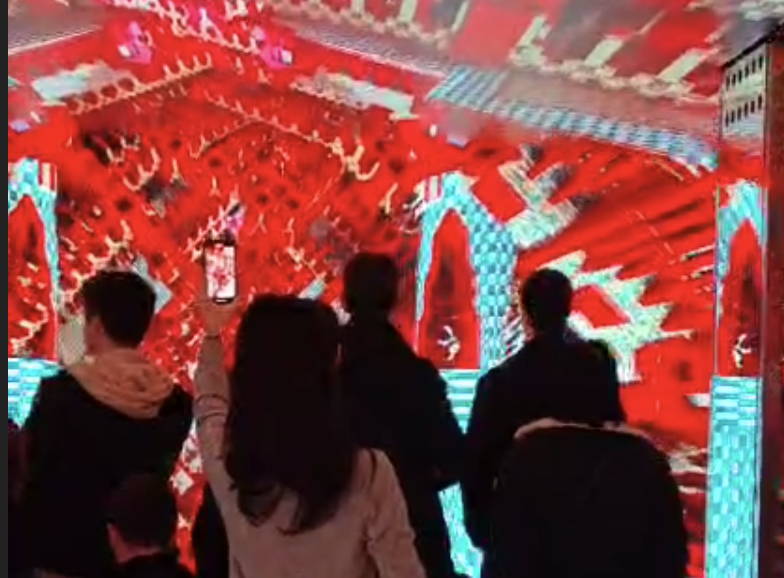Flexible week:Casa Batlló

During Flexi-Week, I had the incredible opportunity to travel to Barcelona, and one of the highlights of my trip was seeing the collaborative work between Refik Anadol and Casa Batlló—a project I had only previously read about online.
The installation, titled Living Architecture, is an AI-generated data sculpture projected onto the façade of Gaudí’s iconic Casa Batlló. Refik Anadol used a dataset of weather patterns, environmental data, and archival materials related to the building, transforming it into a dynamic, ever-changing visual symphony. Standing in front of this historical building, now animated with shifting color, texture, and movement, was truly overwhelming. It felt like a digital heartbeat had been inserted into the bones of the city’s architectural memory.
What struck me most was how seamlessly this work blended heritage and innovation—Anadol did not impose technology onto the building, but rather allowed the building to “speak” through data. This reminded me of some of the core questions I’ve been exploring in my own curatorial project: Can AI act as a creative partner rather than just a tool? What does authorship mean when the ‘material’ is data? How do environments shape the outputs of machine vision?
From a curatorial perspective, this experience challenged me to think more deeply about site-specific AI art and the role of historical or cultural context in shaping how audiences perceive digital works. Casa Batlló already carries heavy aesthetic and emotional weight due to its Gaudí legacy—Anadol’s intervention did not erase or distract from this, but added another temporal and conceptual layer.
It also made me reconsider scale and ambition. Anadol’s work is monumental, and obviously backed by high-end technology and institutional support. While my own exhibition project is much smaller in scale, it encouraged me to think about how I can create emotional or intellectual impact through more intimate and participatory means—for instance, how AI can be used not just to dazzle but to invite reflection, comparison, and dialogue.
Overall, witnessing this work in person was a deeply inspiring moment in my Flexi-Week, and it renewed my enthusiasm for the potential of AI in contemporary art—not just as a tool, but as a curatorial challenge.




Your blog is very comprehensive. You have considered your personal curatorial theme from various aspects. You have already considered the complete curatorial theme and the artists. I’m also glad to see that you have learned knowledge from offline activities and thought about the project.
However, there might be a lack of some resources in your blog. Have you read some relevant literature? Or attended lectures related to artificial intelligence? I believe that sufficient theoretical knowledge will make your project more valuable.
In terms of blog design, it would be better if you could add more pictures for display. This will help me better understand your content. Overall, it is an excellent blog!
Thank you for the suggestion, it very useful for me。